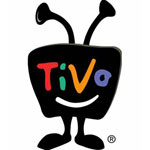
TiVo gets an awful lot of press for a company that really never made it. There are a bunch of DVRs in the world, but most of them are not TiVo brand DVRs. This is someone’s fault (not Marty Yudkovitz’s and not Tom Roger’s), but that’s not what we’re going to talk about today.
Today’s topic is “why?” Why would anyone think that there is a large monetizable audience for true user generated content. The very nature of the art form is that everyone is famous for 15 megabytes. It is the aggregation of thousands, or hundreds of thousands, of streams with as-of-yet un-invented media optimization technology that will open up the world to advertiser supported UGC. The idea that any venue for UGC will find a large, consistent audience is simply wrong. And there’s a reason.
Making compelling video that gets big ratings is extremely hard to do. In fact, it is almost impossible. Forget the metaphysical aspects of creativity, the actual physical number of things that need to come together to create a hit show is mind-boggling.
Would you like a way to think about how hard making popular television is? Consider Tiger Woods. He is, by almost any statistical measure, the best golfer in the world. It is hard to put his PGA handicap into average golfer perspective because the courses he plays have almost no relationship to the courses regular humans play. However, if you want to be on the PGA tour, there is absolutely nothing standing in your way. The system is a complete meritocracy. If you can shoot about 10 under par every time you play, you will find yourself standing next to Tiger at the next U.S. Open. Can you do it? Probably not. And, there is the more important question: Even if you do have the talent, do you like golf enough to practice and play that much? The answer for most people is no. This is exactly what producing hit television content is like. Want to see your show on a major network, primetime 9 PM on Thursday Nights? Go make a hit show. The only thing preventing you from doing it is talent, dedication, skills, desire, etc. Want to kick Dick Wolf’s butt? It’s easier said than done.
So why are people thinking that everyone on earth is going to become Steven Spielberg overnight? You might have one hit in you, but a consistent string? No way. Need some proof? Let’s look at www.break.com one of the most visited UGC sites on the net. They are the proving ground for new video makers. If you visit the site, you will find some remarkable UGC and you will immediately wonder why all of these talented folks leave break.com after they have a hit to become “real” TV people? I was wondering too, so at the TV Week’s Viral Video Awards presentation, I asked the CEO, Keith Richman, that very question. His response was fascinating. “We are not in the business of developing talent, it’s too expensive. Break is a place that people can come to see what people think of their work.”
I decided that this was not a satisfactory answer so I pushed the point. After all, one hit series can make a cable network. How many cable shows have become franchises and led their respective networks to financial glory. Trading Spaces, South Park, Biography, the list isn’t endless, but it’s long. Isn’t the Internet a valid means of video distribution? Can’t a website develop hit shows, find and keep an audience? His answer was simply, “it’s not part of our business model.”
Now, you can use this TiVo technology to send and receive all kinds of IP video, so we don’t have to limit our discussion to UGC. There may be a business in moving bootleg or pirated content around in this manner. And, as I said (half jokingly) in the opening paragraph, the adult business and amateur webcamers will love this technology.
The key insight here is that we (all of us) must understand that all video is not the same. I know it sounds obvious, but from the money I see being invested and the incredible hype in the year of online video, it cannot be repeated often enough. There is a continuum of video experiences from 12″ to 12′ and a continuum of mindsets from lean-backward to lean-forward and a continuum of economic viability from not viable to extremely profitable. Any piece of video content can fall anywhere in any of these three scales and sometimes, the space they occupy is counter-intuitive.
TiVo has an uncanny ability to get their name in the news. It is always impressive to see articles about their technological breakthroughs on the front page of the Wall Street Journal. But don’t confuse good PR with actual paradigm shifting technology.
In the coming months we are going to see several private content distribution networks (CDNs) over the public Internet. Companies like iWatchNow (Knock Knock), NeuLion (KyLin TV), ITVN, Akimbo and others are going to demonstrate the value of converged television-like displays with public IP-provisioned distribution. TiVo, with their feature-laden box, may have a leg-up on this new competition, or they may not. Perhaps the business rules that governed their early inroads into the world of protected content will prevent them from exploiting the unfolding new world of IP distribution.
One thing is for sure, the public is now exhibiting behaviors that tell us that there are preferred places to watch each type of video content. Companies who are in a position to exploit these preferences are going to fair far better than those organizations who are trying to change them. ![]()